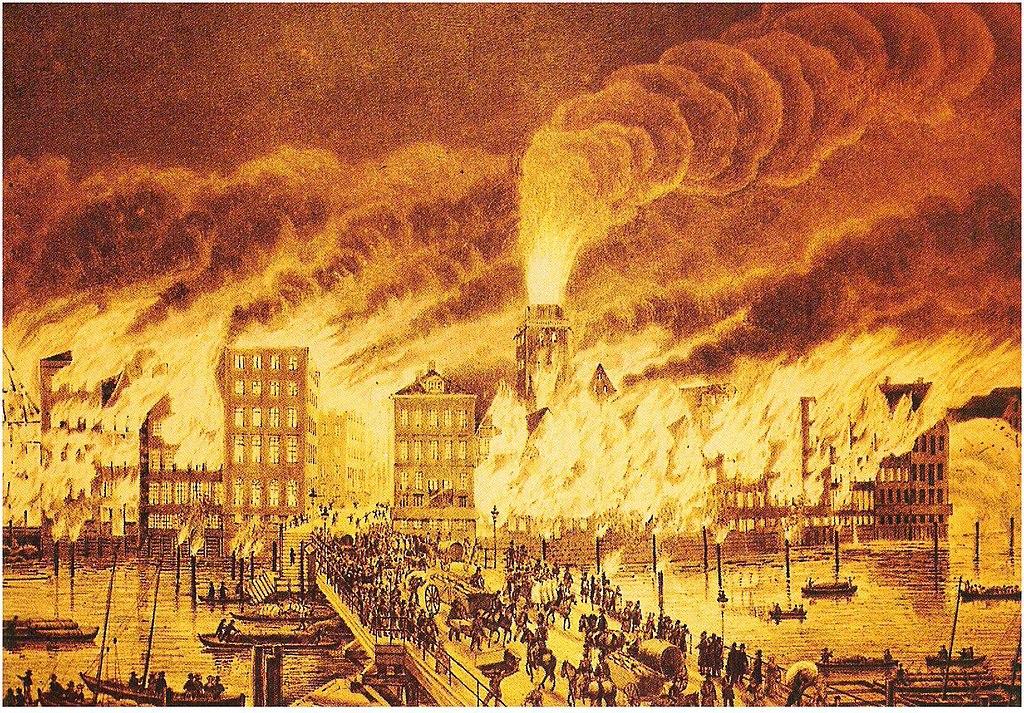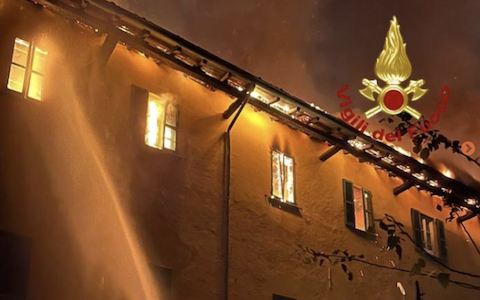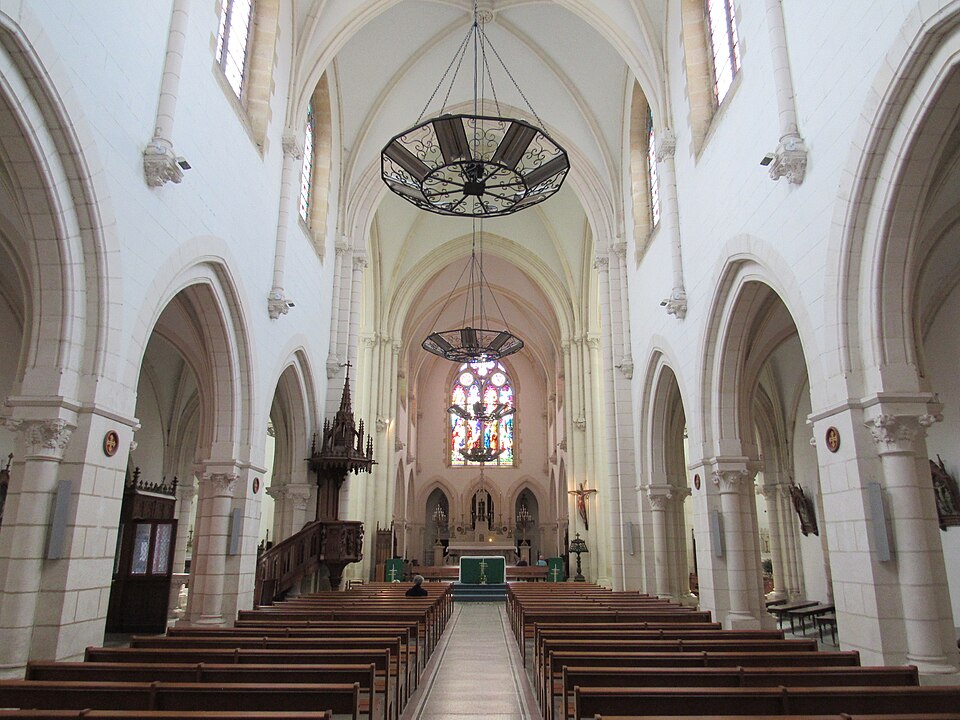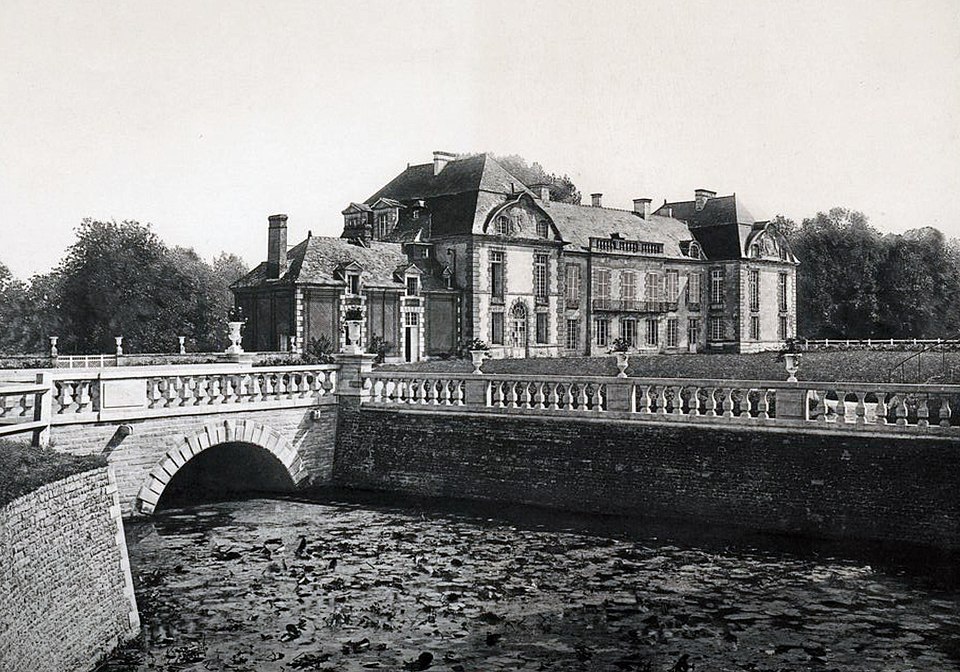Climate Conditions and Fire Risk in Historical towns
Historic buildings and the areas that house them are subject to a particular fire risk. In fact, many of the construction techniques, systems and materials used in the past centuries do not guarantee the levels of fire performance required for more recent buildings.
This blog has covered fires that have recently affected populated areas, such as the Los Angeles area. Closely linked to these insights is also their historical perspective, that is, understanding how in past centuries the same buildings and cities that we now classify as historic have behaved in the event of a fire.
The analysis conducted by Prof. David Garrioch (Emeritus Professor of History at Monash University) in the article “Towards a fire history of European cities (late Middle Ages to late nineteenth century)” helps to uncover important information on these aspects and, more generally, on the general relationship between climate change and urban fire risk.
This study, which focuses on fires that affected urban centres in a specific historical period (1500-1800) and in a specific region (Central-Northern Europe), correlates climatic conditions with the severity of the fires.
Going into the merits of the article, the first data of interest concerns the peak of fires that occurred in the 17th century, coinciding with the cold periods of the Little Ice Age. This apparent paradox is explained by the climatic variability, which determined the spread of fires. The weakening of fire prevention measures, in fact, was favoured by the worsening of socio-political conditions caused by the droughts and periods of famine experienced by populations.
The number of destroyed houses as been used as an indicator of severity, revealing that most large fires occurred in periods of warm and dry climate, although other factors, such as building techniques and the effectiveness of fire services, played a significant role.
The Little Ice Age
The Little Ice Age was a period of cold climate that occurred from approximately 1300 to 1850. During this period, average temperatures decreased, although not uniformly, making it one of the coolest eras of the last two millennia.
The Little Ice Age was characterized by considerable seasonal variability and extreme weather events. Although most years were cold and wet, some summers were exceptionally warm. These anomalies appear to be linked to atmospheric circulation in the Atlantic, influencing wind direction, temperature, and precipitation across much of Europe. Some specific aspects of the Little Ice Age are:
- Alpine glaciers expanded rapidly in the 14th century and again from 1580 to 1660 and into the 19th century. The first half of the 16th century was mild, followed by cooler, wetter conditions until the early 17th century.
- The middle decades of the century, from 1640 to 1670, were characterized by volcanic eruptions and exceptionally cold and wet years across much of the Northern Hemisphere.
- European winter temperatures were again low during the late Maunder Minimum (1684–1715), associated with reduced solar activity, and the 1690s were very cold and wet, leading to famines in parts of Europe.
- Warmer conditions gradually returned in the first half of the 18th century, but after 1740 average winter temperatures were again cooler across much of the continent.
The role of construction materials
Building materials played a crucial role in the spread of fires in European cities between 1500 and 1800. Whether or not building materials were flammable was a major factor in how a fire started and spread. Key points about the role of building materials in the spread of fires :
- Wood and thatch buildings: In areas where wood was the most common building material, and where roofs were often thatched, the risk of fires was very high. Wooden buildings, especially if of poor quality due to population growth, easily became combustible, especially in drought conditions.
- Scarcity of timber and alternative materials: In southern Europe, where deforestation had made wood scarce and expensive, materials such as stone and tiles were used to construct buildings. This led to a lower incidence of large fires in these regions.
- Brick Spread: In the Netherlands and other parts of Northern Europe, the use of brick became increasingly common over time. This shift to less flammable building materials helped reduce the risk of large fires.
- Building Regulations: In many cities, building regulations required the use of less flammable materials such as brick, stone, tiles, or slate. The construction of fire walls, especially if they projected above the roof line, proved effective in preventing the spread of fires.
- Plaster: In some cities, such as Paris, the widespread use of plaster, an effective flame retardant, helped prevent the spread of small fires.
- Warehouses and Flammable Materials: Port areas were particularly vulnerable due to the presence of warehouses containing highly flammable materials such as tar, pitch, hemp, and flax. These materials, if caught in the flames, would fuel the fire and make it more difficult to control.
Climate impact
Climate variability had a significant impact on the ability to prevent and control fires in European cities between 1500 and 1800. Abnormal weather conditions, such as periods of heat and drought, not only increased the risk of fires, but also indirectly affected the ability of urban communities to prevent and manage them. Here is how climate variability affected fire prevention and control:
- Weather extremes: The largest fires occurred during periods of heat, drought, and strong winds. These extreme weather conditions dried out wooden buildings, making them more susceptible to fire and allowing flames to spread quickly. Lack of water during periods of drought made it more difficult to obtain water to put out fires.
- Social and economic unrest: Famine and economic crises caused by adverse weather conditions, such as excessive cold, rain, or drought, led to social unrest and political instability. These factors made it more difficult for urban authorities to invest in fire prevention and control.
- Reduced resources: Economic crises and famines reduced municipal tax revenues, making it difficult to finance fire services and purchase equipment. Parishes and guilds, often responsible for providing fire equipment and poor relief, also found themselves with fewer resources available just as demands grew.
- Impact on local leadership: Social and political instability could undermine local leadership and social cohesion, which were crucial in fires. In some cities, local officials’ inexperience and lack of coordination prevented effective fire management.
- Lack of maintenance and prevention: Reduced resources and social instability led to less enforcement of preventive measures, such as building codes requiring the use of less flammable materials. Maintenance of fountains and pipes, essential to water supplies, was also neglected.
- Unpreparedness and inability to respond: In many cases, cities were unprepared to deal with large fires, with a lack of fire-fighting equipment and trained personnel. The ineffectiveness of fire-fighting services, often reliant on volunteers and limited resources, contributed to the rapid spread of fires.
Population growth and construction Vs fire frequency
The relationship between population growth, construction and fire frequency in Europe between 1500 and 1800 is complex and not always linear. Although one might expect that an increase in urban population would lead to an increase in fires, the data does not always bear this out. Here are some key points:
- Population growth and fires: The article highlights that although the urban population grew significantly over the period studied, there is no direct statistical correlation with an increase in fires. In fact, the 17th century saw a peak in fires, despite slower urban growth than in the 16th and 18th centuries.
- Building type: Increased population led to a greater demand for housing, which in turn encouraged the construction of low-quality wooden buildings where there were no effective building regulations. This type of construction, combined with the use of flammable materials such as thatch for roofs, increased the risk of fires.
- Building materials: In areas where timber was scarce or expensive, such as in Southern Europe, materials such as stone and tiles were used, which led to a lower incidence of large fires. The use of bricks became increasingly common in Northern Europe over time, helping to reduce the risk of fire.
- Port areas and flammable materials: The presence of port activities, with warehouses full of flammable materials (such as tar, pitch, hemp and flax), made some cities, such as London and Hamburg, more vulnerable to fires.
- Building regulations and prevention: Where local authorities imposed building regulations (such as using less flammable materials and building fire walls) and implemented prevention measures (such as night guards) fires were more easily controlled and extinguished.
- Social and political instability: Social and economic unrest caused by adverse weather conditions and famine made it difficult for local governments to invest in fire prevention.
- Effectiveness of fire services: The ability to put out a fire depended on the effectiveness of fire services and the speed with which it was detected and dealt with. Cities such as Amsterdam and Venice, which had well-organized fire services, were less affected by large fires.
Conclusions
In referring to the reading of the entire article, which due to its richness and level of detail cannot be summarised in a few lines, in summary in our opinion:
- Climate variability not only increased the risk of fires through extreme weather conditions, but also weakened the capacity of urban communities to prevent and control them. The socio-economic consequences of climate anomalies, such as famines and economic crises, reduced the resources available for fire prevention and control, and undermined the political and social stability necessary for effective management. As a result, many urban centers were more vulnerable to fires precisely because of the indirect effects of climate variability.
- The choice of building materials seems to have had a significant impact on the spread of fires. Cities with buildings constructed of wood and other flammable materials were much more at risk than those that used more fire-resistant materials such as stone, brick, and tiles. Furthermore, the implementation and enforcement of building codes that required the use of less flammable materials and the construction of fire walls proved crucial in limiting the spread of fires.
Finally, while population growth led to changes in building types and population density that may have increased the risk of fires, the frequency of fires was more influenced by factors such as abnormal climatic conditions (periods of heat and drought), the quality of building materials, the effectiveness of prevention measures, and political and social stability.







